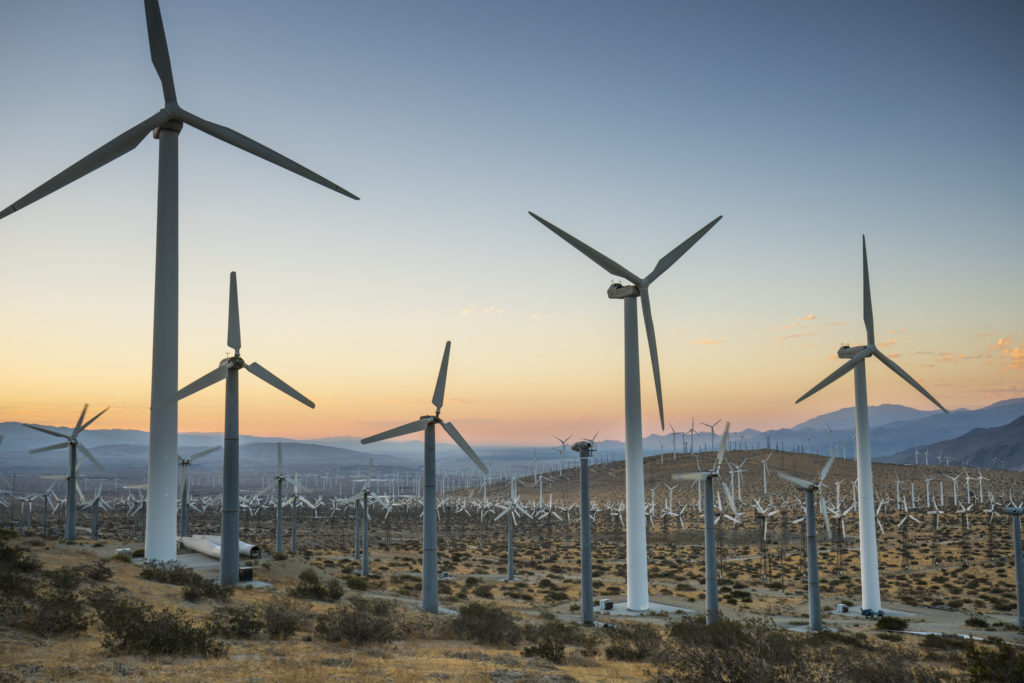California legislature awaits Governor’s signature to pass zero-carbon electricity commitment by 2045
Last week, the California state legislature passed SB100, a landmark bill committing California to 100 percent carbon-free electricity by 2045. The bill, sponsored by state Senator Kevin de León (D) who is currently running for the US Senate, builds upon California’s existing energy targets, which set a target for 50 percent renewable energy by 2030. The new bill sets a threefold target for electricity production: 50 percent renewables by 2026, 60 percent renewables by 2030, and 100 percent carbon-free energy by 2045. The bill only awaits a signature from Governor Jerry Brown (D.) for it to be adopted into law.
With this piece of policy, California would join Hawaii as the only state to commit to 100 percent carbon-free energy. Unlike Hawaii’s mandate, however, California’s would encompass not just renewable forms of energy such as wind and solar, but also other forms of carbon-free energy. This would include large scale hydropower and natural gas with carbon capture and storage, allowing for some flexibility for California to meet its ambitious goals. California, as the third largest and the most populous state, would also be able to make a much larger impact than that of Hawaii.

So is this goal feasible?
Many Californians are hopeful. Currently, the state is ahead of its energy targets, at 29% of electricity generated by renewable energy in 2017, and over 50% from zero-carbon sources. One of the main concerns for the clean energy industry is that renewable energy doesn’t have reliable availability. There is no sunlight at night or when it is cloudy, and some days there is no wind. On the other hand, solar plants often produce more electricity at midday than the grid needs at that time. One solution would be to use batteries to capture and store energy, but the current technology is lacking. Forbes contributor and professor of Information Systems Enrique Dans makes a compelling case that the technology is already well on its way. Dans explains that it is possible for the battery technology to advance and for prices to drop in exponential degrees due to the learning curve associated with developing technologies. California has been steadily creating a market for battery energy storage due to its promotion of electric cars and home solar panels with domestic battery storage. The more California uses and creates demand for renewables, the more the technology will advance, and the cheaper it will become.
Some Californians are more critical of the feasibility of 100 percent clean electricity. Jan Smutny-Jones, chief executive officer of the Independent Energy Producers Association commented to the San Francisco Chronicle, “I’m a big believer in batteries, but there’s a danger in overhyping what they can do and how fast they can do it.” He worries that natural gas plants, which the state relies on to provide energy when there is not enough solar, could be pushed out when the state still needs them. California lawmakers opposed to the bill, of which there were both Republican and Democrat, also questioned how this bill would affect the cost of living in California, where the cost of living is already well above the national average. This comes on top of the mandate last May proclaiming that all new homes built after 2020 must have solar panels installed, which is predicted to increase the upfront cost of housing in the midst of California’s affordable housing crisis.
Governor Brown is largely expected to sign the bill into law. California has long been at the forefront of climate action, and this move would further cement California as the leader and role model for other state governments in their plans for green energy.
Sources and Further Readings
California is this close to its boldest energy target yet: 100% clean electricity – VOX
California’s response to record wildfires: shift to 100% clean energy – The Guardian
In California, By 2045, 100% Energy Will Be Clean. What About The Rest Of The World?
– Forbes
California wants 100% clean power by 2045. Wishful thinking? – San Francisco Chronicle
California Assembly Passes Carbon-Free Energy Bill – The Daily Caller
‘A difficult pill to swallow:’ California’s housing industry is bracing for a new regulation that could make its affordability crisis worse – Business Insider
